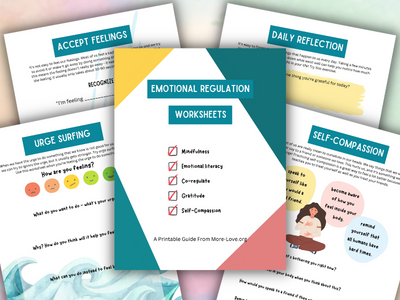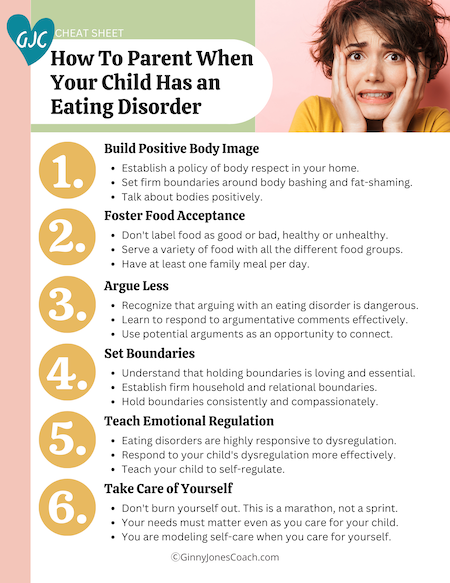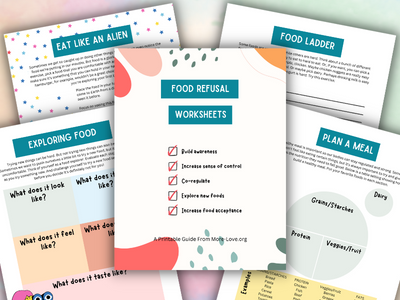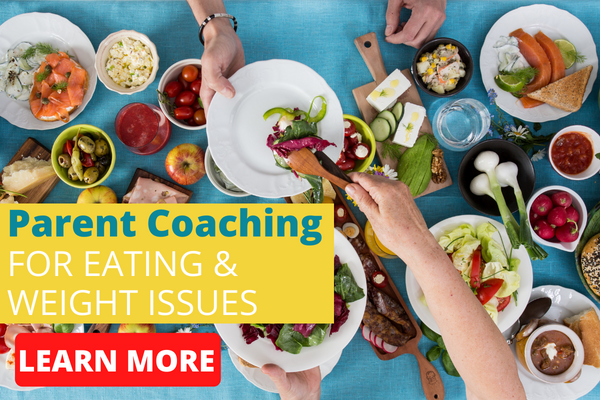
Embodiment is the sensation of being in your own body and trusting the body’s signals, desires, and demands, and it’s very helpful in eating disorder recovery. An embodied person has a respectful, trusting, and kind relationship with their body. For centuries, Western culture has promoted the separation of mind and body, suggesting that the body is an inconvenient and unruly child, while the mind is the wise and knowing grownup who should dominate and control it.
This approach is everywhere, from education to medicine and psychology. It encourages the separation of body and mind. However, physically and emotionally we are one body-mind. There is no separation between the mind and body. They are one.
Emotions begin in the body and travel up to the mind. The body provides the mind with critical information about safety and threat. In our mind-first culture, people learn to ignore these essential signals and prioritize the mind’s thoughts, which are not always accurate or appropriate responses to the body’s signals.
Humans evolved with an intricate emotional system to keep us safe and healthy, but Western culture has worked to disembody us. Our culture has prioritized the mind as smarter than the body. This disconnect supports racism, sexism, heteronormativism, anti-trans bias, anti-fat bias, and other systems of oppression. It also leads to mental and physical illness. Almost all mental illnesses trace to a disconnect between body and mind. And the solution to many mental disorders, including eating disorders, is embodiment.
Emotional Regulation Worksheets
Give these printable worksheets to grow more confident, calm and resilient and feel better, fast!
- Self-Esteem
- Self-Regulation
- Mindfulness
- Calming strategies
Why is embodiment helpful for eating disorder recovery?
Eating disorders almost always begin with the suppression of bodily signals. Rather than feed the body adequately, the mind intervenes and creates rules and shame around the most natural and necessary act of staying alive: eating. Hunger exists to keep us alive. Eating feels good because it is essential to living. And yet societal messages turn our minds against these natural instincts.
These messages are planted by diet culture, which exists in every corner of our society. Diet messages are taught in schools, promoted in doctors’ offices, and perpetuated at almost all family dinner tables. These messages say the body is not to be trusted. Instead, diet culture says the mind must ignore bodily hunger cues, appetite, and cravings and control and limit food.
When an eating disorder takes hold, it whispers these beliefs repeatedly, leading the person to avoid food and eating. Because the body has needs, often it will react to deprivation by binge eating. Sometimes the person will compensate for eating by purging and/or over-exercising.
The body is a resource, not an obstacle, in the recovery process and often needs to be resourced directly through a wide variety of body-based interventions before it can effectively metabolize food.
Embodied Recovery Institute
Embodiment is essential for eating disorder recovery because it returns the person to a respectful and honest relationship between the mind and body. Rather than allowing the mind to dominate and control the body, with embodiment we trust the body’s signals and aren’t afraid to respond to its needs with intelligence, love and care. Embodiment means approaching recovery with more ease and confidence and the belief that the body is wise and trustworthy. The mind is part of embodiment, but it does not ignore the body’s messages.
What are some embodiment practices?
Many people with eating disorders describe themselves as disembodied. They find themselves unable to connect with how they feel in their body, what their body wants, or to take cues from their body. Rebuilding the brain-body connection takes time and practice, but anyone can do it.
The core skill of becoming embodied is mindful attention. With an eating disorder, people become intentionally disconnected from their bodily sensations. Mindful attention to what the senses are taking in and how your body is experiencing the world can begin the reconnection process. Here are a few ways to begin:
5 senses scan
Look around and notice five things that you can see. Tune into your sense of touch and notice four things you can feel. Listen carefully and notice three things you can hear. Bring your attention to your nose and notice two things you can smell. Focus on your tongue and mouth and notice one thing you can taste.
Body scan
Get comfortable and tune into the sensation of your breath going in and out of your body. Repeat this for several breaths. Now notice how your body feels in space. Depending on your position, feel your feet on the ground, the places where the floor or cushion touches the backs of your legs, back, etc. Beginning at the top of your head, slowly bring your attention to different body parts, making your way down to your toes. What do you feel in each body part? Repeat this with your internal organs.
Yoga
Many yoga poses can support embodiment. For example, savasana, or corpse pose, can be a way to tune into the body and become aligned with how it feels. Additional poses commonly used in embodiment practices include downward dog, tree pose, and crocodile pose. The important part is to notice how the body feels within the pose and remain mindful of your body’s signals throughout your practice.
Barefoot grounding
Grounding, also known as earthing, is mindfully standing or walking barefoot. It’s often done outdoors on grass, mud, or sand. Ideally, it’s in a park, forest, beach, or lakeside. While outdoors is typically preferred, indoor surfaces like carpet, wood, or concrete work. The goal is to notice how it feels, down to the minute detail, when your bare feet connect with the Earth’s surface.
Why is yoga such a good practice for eating disorder embodiment?
Embodiment is essential for eating disorder treatment and recovery because it reconnects the body and mind. And yoga is a common way to build embodiment during recovery. Research indicates that yoga is an effective tool for eating disorder treatment. This is likely due to its ability to shift from a negative to a positive relationship with the body. It also nurtures self-respect, well-being, and embodiment.
To learn more about the connection between yoga and eating disorder recovery I talked to Julia Oliver, RD, LDN, RYT. Her practice, Rooted Recovery, offers yoga and nutrition services for people in recovery. She also runs Embodied Yoga on Demand, an online library of yoga and meditation classes to support eating disorder recovery.
“Since it can be gentle in nature, yoga is a supportive option for individuals who need a recovery-centered reentry into movement” says Julia. “Yoga offers a stepping stone as individuals begin to safely enter back into their relationship with their body and reconnect with body signals.”
Julia describes an eating disorder as a disembodying disorder. “It takes the person out of their body and turns the mind against the body,” she says. “In the midst of an eating disorder, the body is something that is often manipulated, taken control of, and pushed around by a dictating mind.”
During recovery, reconnecting with the body’s signals is necessary to start feeling bodily cues like hunger and fullness. Yoga can help people begin this reconnection process. “By cultivating embodiment in yoga, sensations may become more apparent during the practice,” says Julia. “It can also get us more tuned into our nervous system. It provides a practice field for the grounding skills and regulation techniques individuals may be working on with their therapist.”
“Yoga in its Eastern roots is all about stilling the fluctuations of the mind (aka thoughts) so that we realize we are not our thoughts,” she says. “Yoga, when taught well, can guide us to practice presence, using the breath and sensations as anchors to the present moment where we can then find the space to let go, and not attach to thoughts. Challenging harmful thoughts and beliefs is a foundational part of the recovery process, so you can imagine how the yoga practice, when taught in a way that does not just focus on the physical shapes, can be an inherently supportive part of eating disorder recovery.”
Sample yoga session for early eating disorder recovery
In this vinyasa yoga class, you will be guided through twists, balancing postures, and supported backbends to begin noticing and responding to the unique cues of the body in each pose. As in every ‘Exploration Phase’ class, you will be prompted to use the breath and sensations in the body as anchors to the present moment. Here, you will become more attuned to the balance of effort and ease in your body.

Ginny Jones is the founder of More-Love.org, and a Parent Coach who helps parents who have kids with disordered eating and eating disorders. Combining science, compassion, and experience coaching hundreds of families, she helps parents understand what’s going on with their kids’ eating behaviors and teaches them the science-backed skills to heal kids’ relationship with food, improve their body image, and feel better about themselves, their relationships, and life in general.
Ginny has been researching and writing about eating disorders since 2016. She incorporates the principles of neurobiology and attachment parenting with a non-diet, Health At Every Size® approach to health and recovery.






















